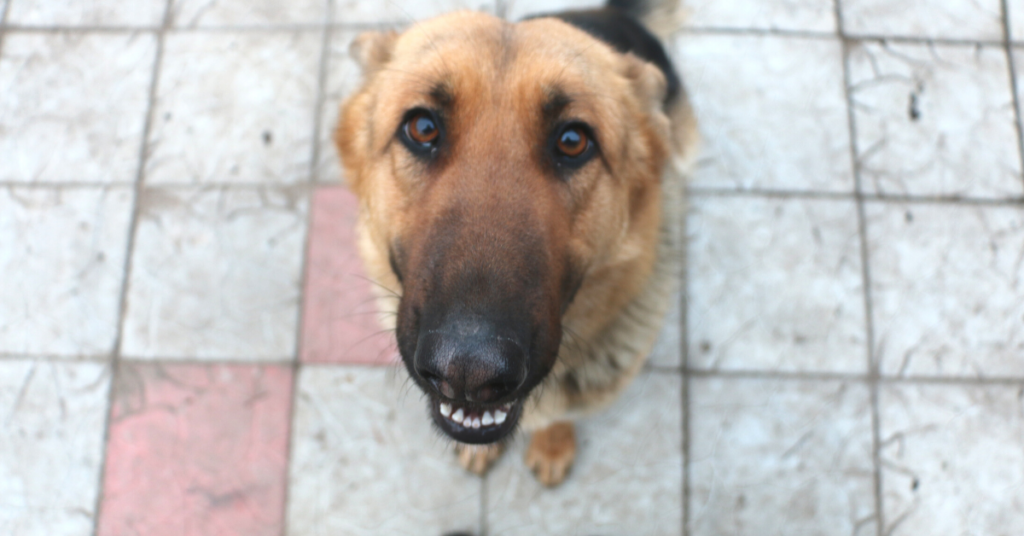Cloudy Eyes In Dogs (Possible Causes)
Reviewed by Lauren Cannon, DVM
Changes in your dog’s eyes can indicate serious health issues. Cloudy eyes in dogs may seem natural as part of the aging process.
However, cloudy eyes can also be a sign of eye problems. Diagnosing eye problems may not be easy, that’s why your vet is your best resource for diagnosing and treating eye diseases.
Moreover, we don’t want our dogs to eventually lose their vision. That’s why it helps to know what types of issues can cause cloudy eyes in dogs and the symptoms.
You should seek veterinary help as soon as you notice any weird changes in your dog’s eyes.
Causes of Cloudy Eyes In Dogs

The most common causes of cloudy eyes in adult dogs are nuclear sclerosis and cataracts. However, there are some other causes that need immediate veterinary care.
Nuclear Sclerosis
Cloudiness in dog’s eyes is normal as they age, since most dogs develop a haze within the lens, which is called nuclear sclerosis, also known as lenticular sclerosis.
It is a change in the lens of the eye. This condition rarely causes vision damage, though it can affect the focusing ability. Nuclear sclerosis is sometimes confused with cataracts.
However, there are a few differences. Nuclear sclerosis usually gives your dog’s eyes a cloudy, bluish discoloration, unlike cataracts where the eyes appear white and dull.
Moreover, this condition tends to affect both eyes at the same time. In addition, this case doesn’t need any treatment, and doesn’t cause serious problems.
Finally, it is a good idea to see your vet and check your dog’s eyes, since it is common for dogs with nuclear sclerosis to also develop cataracts, and will need regular vet check ups.
Cataracts
Dogs with cataracts often have white milky eyes. This change to the dog’s lens is the result of abnormal lens metabolism.
The lens acts like a camera lens, focusing light on the film at the back of the eye, called the retina, where the brain then processes the information to form a picture of the world around it.
The lens is made up of water and protein, where they are organized in a very specific way. When the proteins start to cluster together, they can form cataracts.
These protein strands gradually vague the lens, making it harder for the dog to see clearly, and in some cases causes blindness.
Causes of cataracts include age, trauma, diabetes, and genetics. In addition, some breeds are more vulnerable to genetic cataracts than others.
It can happen when they are puppies or as they grow, depending on the type of the inherited cataracts.
Most common breeds affected include Cocker Spaniel, Bichon Frise, Boston Terrier, French Bulldog, American Staffordshire Terrier, and Siberian Husky.
Finally, cataracts can sometimes lead to a more serious problem such as glaucoma. That’s why quick diagnosis by your vet is important.
Glaucoma
Glaucoma happens in dogs when the eye is under pressure, which causes damage to the structures in the eye.
This condition is serious, since it can result in permanent damage to the optic nerve and eventually blindness.
Symptoms of Glaucoma include cloudy eyes, or a blue or red tint to the cloudiness. You may also notice a lump to the eye, increased discharge, an enlarged pupil, and sometimes loss of vision in one eye or both eyes.
There are two types of Glaucoma, genetic, and secondary Glaucoma, which is caused by other conditions such as Cataracts, lens luxation or subluxation, where the lens changes position in the eye.
Dry Eye
Dry eyes or “keratoconjunctivitis sicca” in dogs happens when the dog’s body won’t produce enough tears. Tears are needed for lubrication and overall eye health.
Since that tears consist of aqueous solution which is responsible for receiving necessary nutrients.
If that happens, the surface of the eyes become irritated, creating a cloudy dull appearance, ulcers can form, and in severe cases can lead to rupturing of the eye and corneal ulceration.
Other symptoms of dry eyes include discharging of mucous, redness around the whites of the eye, swelling of the tissue on the surface of the eye and eyelids, and too much blinking.
Finally, dry eyes are usually linked to an autoimmune inflammation of the tear glands. It can also be a chronic condition.
Ulcers
Ulcers in dogs is an infection in the dog’s cornea, the membrane on the front of the eyes.
As they develop they may appear reddish, bluish, or just as a cloud or haze at the surface of the eyes.
Moreover, they can be painful, followed by a discharge, and squinting of the eyes. It can also lead to rupture of the eyes if it becomes infected.
Finally, It is caused by dry eyes as mentioned earlier. Or it can happen due to rubbing the eye on a rough surface, or scratching by another dog or animal, or bacterial and viral infections.
Anterior Uveitis
Anterior Uveitis is another condition that causes cloudy eyes in dogs. The uvea is the part of the eye that’s made up of the choroid, ciliary body, and iris.
It is an inflammation of one or more of these parts. It’s considered serious and can lead to vision loss.
Symptoms of Anterior Uveitis include cloudiness or redness or eyes, weird shaped pupil, swollen eyeball, extreme tearing, and squinting.
Finally, this condition can be caused by autoimmune diseases, trauma, cancer, parasites, or other bacterial and viral infections.
Corneal Dystrophy
Corneal dystrophy is an inherited condition that causes cloudy eyes. There are three types of this condition depending on the location in the eye: epithelial, stromal, and endothelial.
Epithelial corneal dystrophy affects the external layers of the cornea. It can be uncomfortable. Whereas, Stromal corneal dystrophy affects the middle layer of the cornea.
Finally, Endothelial corneal dystrophy affects the deepest corneal layer, it typically affects middle-aged or older dogs, and can lead to corneal ulcers.
Diagnosing & Treating Cloudy Eyes in Dogs

Diagnosing and treating your dog’s cloudy eyes depends on the cause behind it. For example, if the cause was Cataracts, early diagnosis is important, since it can lead to vision loss, and some cases need cataract surgeries, and it is best to do this as early in their formation as possible.
If the cause was Glaucoma, it’s usually diagnosed using a tool called tonometer.
It’s important to also know if it was genetic or secondary glaucoma, because the treatment will differ.
Your vet may prescribe medications. If they didn’t work, he will recommend laser therapy, implants to aid drainage, and in severe cases a surgery is needed.
Moreover, if the cause was dry eyes. The vet will do an eye exam, and sometimes a test to measure the amount of tear production.
Dry eyes can usually be treated with topical antibiotics and tear-stimulating medications. In severe cases, there are surgical options to improve tear production.
In the case of corneal ulcer, the vet will diagnose it using a fluorescein stain test. They are usually treated with medicated drops to prevent infection and reduce pain.
If the cause was Corneal dystrophy, the vet will use a microscope with a bright light to determine the type of corneal dystrophy your dog has.
He may prescribe antibiotics for the eye. Eventually there is no cure for Corneal dystrophy, and it doesn’t lead to loss of vision.
Finally, if the cause was Anterior Uveitis, treatment will depend on the cause, and includes eye drops or ointments, and oral medications.
When to See a Veterinarian

If you notice signs of cloudy eyes in your dog such as haze, redness, bluish tint, increased discharge, or change in the pupils shape or size, and recurrent squinting or blinking.
It may be best to see your vet or veterinary ophthalmologist as soon as possible, to help diagnose the cause behind cloudy eyes as early as possible, and recommend the right treatment.
In conclusion, the treatment of cloudy eyes depends mainly on the cause, years of age, the stage of the problem, and how discomfortable your dog is.







